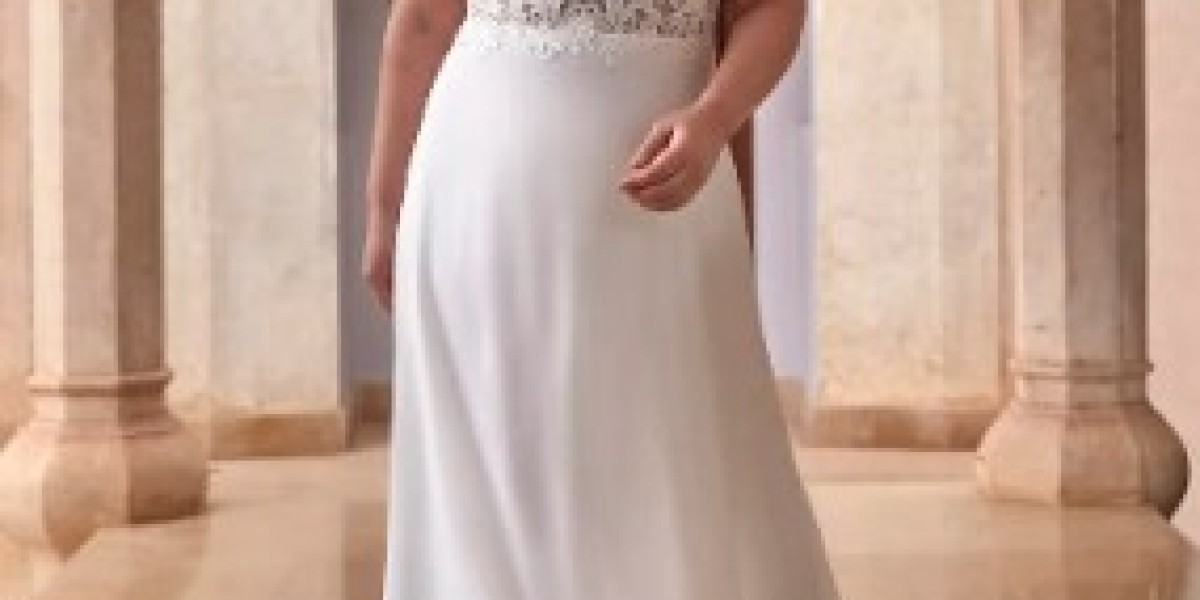Few garments in a woman’s life carry as much emotional significance as the bridal gown. More than just a dress, it represents transition, celebration, heritage, and personal expression. For centuries, bridal gowns have evolved with shifts in culture, fashion, and symbolism, yet they consistently stand as icons of beauty and commitment. Today’s brides navigate a world rich with options—from vintage silhouettes to minimalist modern designs—allowing every woman to discover a gown that reflects her identity. Understanding the history, symbolism, and trends behind the bridal gown helps illuminate why this single garment remains so deeply cherished.
A Brief History of the Bridal Gown
The modern idea of a traditional white wedding dress traces back to the 19th century. Before Queen Victoria married Prince Albert in 1840 wearing a lavish white satin gown, brides commonly wore their best dress—regardless of color. Victoria’s choice made headlines and set a new standard, shifting white into the symbol of purity, elegance, and luxury.
As the decades progressed, bridal gowns became cultural mirrors. The early 1900s favored corseted bodices and voluminous skirts; the 1920s embraced flapper influences with dropped waists and flowing fabrics. After World War II, Christian Dior’s “New Look” revitalized romantic silhouettes, leading to cinched waists and full skirts. By the 1980s, lavish embellishments dominated, inspired by Princess Diana’s iconic puffed sleeves and dramatic train.
Today, brides draw inspiration from all eras, blending classic tradition with contemporary flair. This flexibility has redefined what a bridal gown “should be,” turning it into a canvas for personal storytelling.
Symbolism Behind the Bridal Gown
Beyond aesthetics, bridal gowns are rich with cultural and emotional meaning. While white continues to symbolize new beginnings in many Western cultures, other colors carry deep significance elsewhere. Red gowns in Chinese, Indian, and other Asian weddings symbolize prosperity, luck, and passion. Gold, ivory, and pastels are common in Middle Eastern and African traditions, often infused with ornate embroidery and beads to represent joy and blessing.
Even within white gowns, symbolism appears in details. Lace often represents delicacy and timeless romance, while pearls symbolize purity and wisdom. Trains convey grandeur, and veils can signify mystery, modesty, or the unveiling of a bride’s new chapter. Brides today may choose symbolic elements consciously, weaving meaning and heritage into their look.
Choosing the Perfect Bridal Gown
Selecting a bridal gown is often one of the most memorable moments in wedding planning, but with so many styles and fabrics, the process can feel overwhelming. The key is understanding how design elements interact with body shape, venue, and personal taste.
Silhouettes
Ball Gown: Voluminous skirts offer a fairytale presence, flattering many shapes by emphasizing the waist.
A-Line: Universally flattering, it provides soft structure without overwhelming the figure.
Mermaid/Trumpet: Perfect for brides wanting to accentuate curves, these silhouettes create bold hourglass shapes.
Sheath: Sleek and minimalist, ideal for modern, bohemian, or destination weddings.
Tea-Length: Playful and retro, great for mid-century themed weddings or casual celebrations.
Necklines
Necklines significantly influence the gown’s tone. Sweetheart necklines radiate softness, off-the-shoulder adds romance, halter necks evoke sophistication, and high necklines bring modest elegance.
Fabrics
Fabric choice shapes the entire mood:
Satin: Smooth and structured for a polished look.
Lace: Timeless, intricate, and romantic.
Tulle: Airy and whimsical for ball gown drama.
Crepe: Sleek and modern, perfect for minimalist brides.
Organza: Lightweight with a subtle sheen.
Every gown reflects both aesthetic preference and emotional resonance. Brides often describe simply “knowing” when they try on the right dress.
Modern Bridal Gown Trends
Fashion continues to evolve, and bridal wear is no exception. Today’s trends emphasize individuality, sustainability, and comfort without sacrificing glamour.
1. Minimalism and Modern Chic
Inspired by designers like Meghan Markle’s Givenchy look, minimalist gowns feature clean lines, tailored silhouettes, and understated elegance. Brides seeking timeless yet contemporary vibes gravitate toward these designs.
2. Statement Sleeves
Puffed sleeves, detachable sleeves, and dramatic bishop sleeves add personality and movement. They photograph beautifully and allow brides to strike a balance between tradition and drama.
3. Vintage Revival
Art Deco beadwork, 1950s tea-length dresses, and Victorian high necklines are back in vogue. Brides appreciate the charm and craftsmanship of these nostalgic elements.
4. Colorful Bridal Gowns
Soft blush, champagne, gold, and even bold hues like black or red reflect a bride’s individuality. Non-white gowns appeal to brides seeking unique aesthetics or honoring cultural traditions.
5. Sustainable and Ethical Bridal Wear
With rising awareness of environmental impact, many brides choose gowns made from recycled fabrics, organic materials, or repurposed vintage dresses. Renting or redesigning a family heirloom gown is also increasingly popular.
6. Transformable Dresses
Convertible gowns with detachable skirts, trains, or sleeves allow brides to achieve multiple looks—perfect for transitioning from ceremony to reception without changing outfits.
The Emotional Significance of the Bridal Gown
Beyond the glamour, the bridal gown represents a bride’s journey. It encapsulates her identity, values, and dreams. For some, it symbolizes family tradition—wearing a mother’s or grandmother’s gown can be a deeply emotional tribute. For others, the gown marks independence and personal style, a moment to celebrate individuality.
The process of selecting and wearing the gown creates lasting memories: the excitement of the fitting, the reactions of loved ones, and the moment the bride sees herself fully dressed. These experiences become woven into the fabric of the wedding itself.
Conclusion
A bridal gown is far more than a wedding dress. It carries history, meaning, craftsmanship, and personal expression. Whether lavish or simple, traditional or modern, the right bridal gown celebrates the essence of the woman who wears it. As trends evolve and cultural influences blend, brides today enjoy unprecedented freedom to choose a gown that resonates with their heart. In the end, the beauty of the bridal gown lies not only in its design but in the story it tells—and the unforgettable moment in which it is worn.




